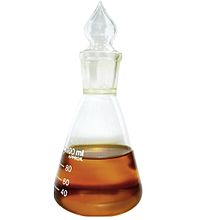
Photo from wikipedia
The use of conventional and advanced biofuels is part of the efforts to reduce greenhouse gases and harmful exhaust gaseous emissions. This study investigates the unregulated emissions in gas and… Click to show full abstract
The use of conventional and advanced biofuels is part of the efforts to reduce greenhouse gases and harmful exhaust gaseous emissions. This study investigates the unregulated emissions in gas and particles from a Euro 6b diesel engine, operated with four unconventional and advanced biofuels (two hydrogenated terpenic biofuels, a polyoxymethylene dimethyl ether, and a glycerol-derived biofuel), blended with diesel fuel and pure hydrotreated vegetable oil as base biofuel. The engine was operated following WLTC starting from cold-engine conditions. Gas phase samples were collected at each phase of the driving cycle and particulate matter (PM) samples were collected from a dilution tunnel at the end of the driving cycle. A total of 16 PAH and 13 carbonyls were analyzed. In addition, the apoptotic index induced by gas and particle emissions was determined. In the gaseous phase, the total PAH and carbonyl emission factors were higher at the low-speed phase for all fuels. Gas-phase PAH emission factors exceeded particle-bound PAH. Carbonyl emission factors ranged from 0.12 ± 0.012 to 25.3 ± 4.2 mg/km, markedly exceeding gaseous PAH emissions, which ranged from 20.7 ± 1.5 to 51.7 ± 8.9 μg/km. Diesel fuel exhibited the highest carbonyl emissions and its blend with 20% of hydrogenated turpentine exhibited the highest PAH emissions at the end of the WLTC, both due to high emissions at the low-speed phase. Although particle-bound PAH comprise only a small fraction of total PAH emissions, both phases (gas and particles) contributed approximately equal to the toxicity associated with carcinogenic PAH. The apoptotic cells percentage increased in a dose-dependent manner and was significantly higher in cells exposed to gas phase-derived samples. The apoptotic index induced by particulate matter samples did not show a concentration-response effect for any of the fuels.
Journal Title: Chemosphere
Year Published: 2022
Link to full text (if available)
Share on Social Media: Sign Up to like & get
recommendations!